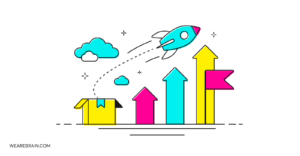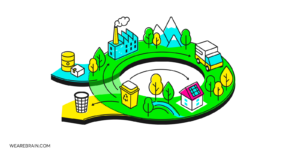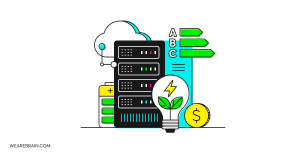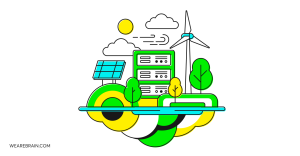Top 5 industries benefiting from IoT

IoT, or the Internet of Things, has proven itself to be far more than just a tech buzzword. It is a major global economic driver and a crucial player in the technological revolution for many industries. The latest statistics show the global industrial IoT market size is forecast to reach USD 110.6 billion by 2025, with predicted worldwide spending on IoT to reach USD 1.1 trillion by 2023.
These figures, in addition to findings that the number of IoT devices worldwide is forecast to almost triple from 8.74 billion in 2020 to more than 25.4 billion IoT devices by 2030, show that IoT technology is poised to deliver unmatched interconnectivity and efficiency in the global business landscape in the coming years.
But how exactly is IoT technology being used to propel growth across industries worldwide? Here is our list of the top 5 industries benefiting from IoT technology.
IoT in Healthcare
We are living in the age of ‘remote healthcare’ thanks to the sophisticated technology of IoT and the current global rollout of super fast 5G networks. Previously, patient-doctor interactions were restricted to in-person visitations, and, more recently, telecommunications and instant messaging consultations. This model made it impossible for medical practitioners to monitor the health of patients continuously to assess changes in condition and make diagnoses.
But IoT-enabled health devices have made remote monitoring of patients’ a viable reality in the healthcare sector, allowing medical professionals to keep patients safe and healthy remotely, giving physicians the power to deliver exceptional remote medical care. Doctors are able to monitor a patient’s health remotely in real-time using a smart device such as a smart watch, allowing room for more targeted diagnosis and treatment options thanks to immediate data availability.
Not only has this process boosted patient satisfaction across the board as interactions with medical staff have become quicker and easier, remote monitoring of patient’s health also helps in reducing the duration of hospital stays and prevents readmissions, especially during a time of pandemic. This helps to reduce healthcare costs significantly while also clearing space in hospitals for serious cases.
IoT in Construction
The IoT has dramatically evolved the way the construction industry operates in recent years with regards to construction safety, efficiency, and sustainability. IoT in the construction industry is booming, with the IoT market share in construction predicted to hit USD 16.8 billion by 2024. IoT is helping to boost productivity by not only streamlining processes but also through enhancing supply units by fitting IoT sensors to determine quantity of materials and locations to store them.
IoT is also reducing issues relating to construction safety and security, specifically on-site theft. Sensors are now placed on items and materials which allows foremen to identify their location at any time. But this tech is also used to monitor materials and processes to update teams in real time when more materials are needed. This also eliminates the need for on-site monitoring which frees up time for other important tasks.
IoT helps create a digital construction sitemap which provides foremen with an overview of the construction process in real-time, allowing for forecasting capabilities and crucial site monitoring when issues arise. But most importantly, these digital sitemaps help construction teams mitigate potential dangers by being able to identify and avoid dangerous zones and hazardous environments to ensure workers’ safety.
IoT in Manufacturing
A great number of worldwide manufacturing plants are already using IoT technology in connected control systems for assembly line processes and supervision, specifically delay-causing issue detection. But the tech shines with its remote monitoring and maintenance capabilities. Via various sensor points, manufacturers receive important maintenance data which provides real-time insights into the current condition of machinery. This helps to determine efficacy over time and helps managers identify which machines are in need of imminent repair.
IoT boosts remote production control by collecting and analysing the data required for supervising various on-site devices (valves, switches, connections, etc.) and running it through an automated system for centralised supervision of machinery and overall production process. In addition, IoT helps the manufacturing industry with asset tracking and logistic management.
IoT in the Energy Sector
IoT technology is being used to enable worldwide smart city initiatives which aim to have a dramatically positive effect on the reduction of our energy consumption in urban areas. But we’re taking a step further into the granular with the development of smart grids: the next generation of traditional energy systems designed to run off IoT technology and connectivity for smarter resource use.
Smart grids allow for the creation of renewable energy by accepting power from renewable energy sources like solar panels and windmills. By using IoT tech, smart grids can track energy consumption levels from all businesses and enable quicker and more accurate billings and estimates thanks to never-before-seen volumes of data.
Smart grids are considered to be more resilient to traditional centralised power grids because they are not centralised, meaning that alternative energy sources can be used when a power outage or technical issue has caused the grid to not function properly.
IoT in Customer Service
IoT technology provides businesses with access to important customer data in real-time to inform support staff about various customer issues. Previously, customers had to contact customer service teams to reveal an issue in need of attention, which is a process that has a few steps. But things are becoming more streamlined. Often, when a device is experiencing issues the data is sent directly to the support department without the customer having to do so, meaning support teams are given more time to handle issues. Support teams can even predict, identify, and solve certain issues before the customer has even noticed a problem: this is taking customer service to the next level.
But IoT technology is not only transforming customer service departments, it is also enhancing the customer experience for many businesses. Customers are being treated to contactless service, customer service bots and virtual assistants, all thanks to the remote monitoring and data synthesising opportunities presented by IoT technology.
IoT and AIoT: the future
IoT is powered by 3 factors: AI, 5G, and big data collected from internet-ready devices. As the technology evolves, so must its ability to gather, synthesise, and understand the data, which is where AI comes in. AIoT refers to the use of AI to better process the data collected by IoT devices.
AI’s ability to present actionable insights in real-time is driving the IoT to new heights by allowing it to perform actions based on the data IoT devices collect. A major driving factor to this technology is the rollout of 5G which enables faster transfer of large volumes of data across IoT devices. We are now seeing the increase of smart homes, offices, and cities powered by sensor-driven devices as AI’s intervention in this tech allows for automated processes at a much larger scale.
Summary
There you have it, our list of the top 5 industries benefiting most from IoT technology. Of course, the intervention of IoT tech is not limited to these industries. On the contrary, IoT tech is being used in almost every conceivable industry across the globe. IoT is pushing the boundaries of data processing and intelligent learning which is helping businesses to adapt to smarter processes and new direction from gathered insights.
Mario Grunitz
Working Machines
An executive’s guide to AI and Intelligent Automation. Working Machines takes a look at how the renewed vigour for the development of Artificial Intelligence and Intelligent Automation technology has begun to change how businesses operate.







